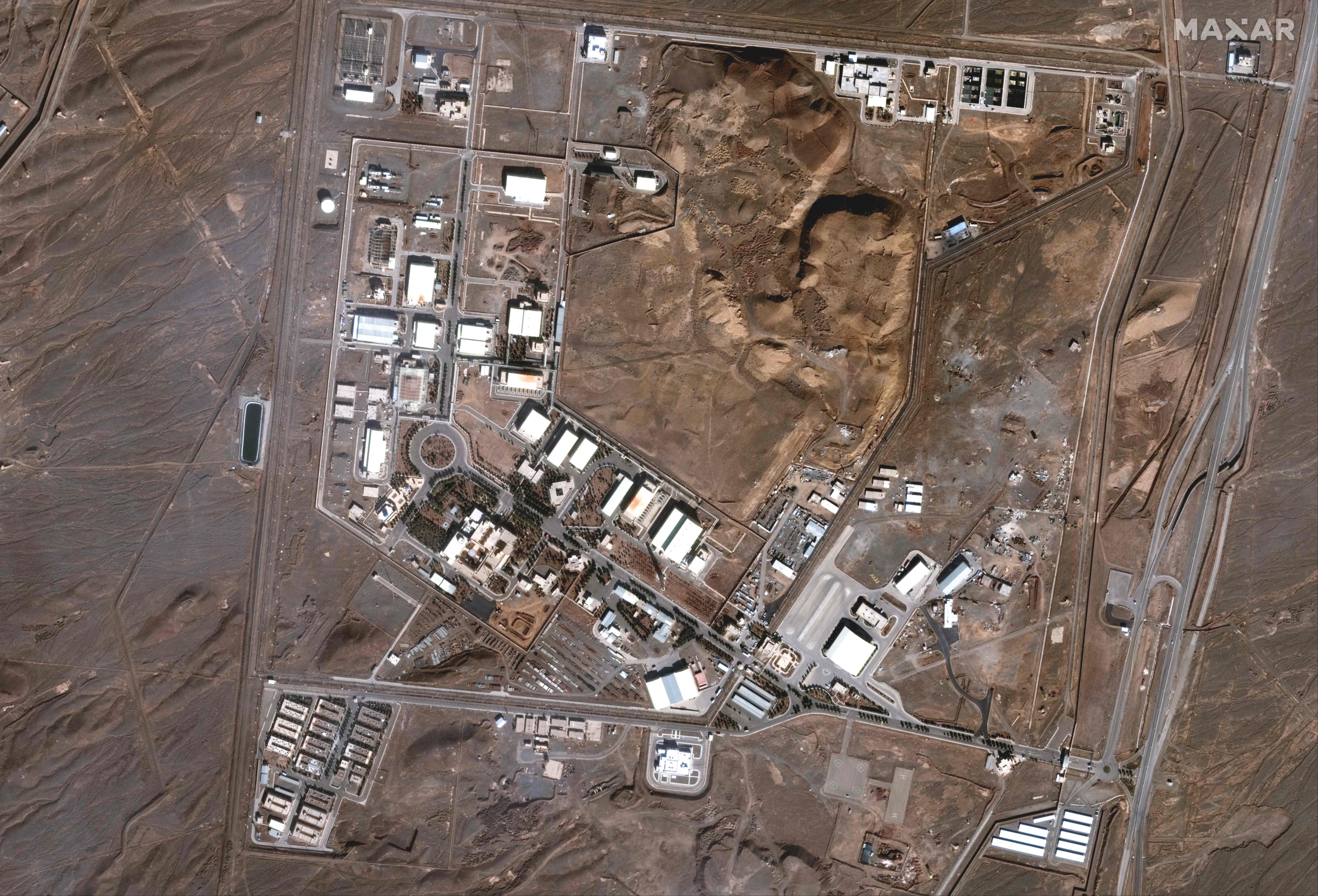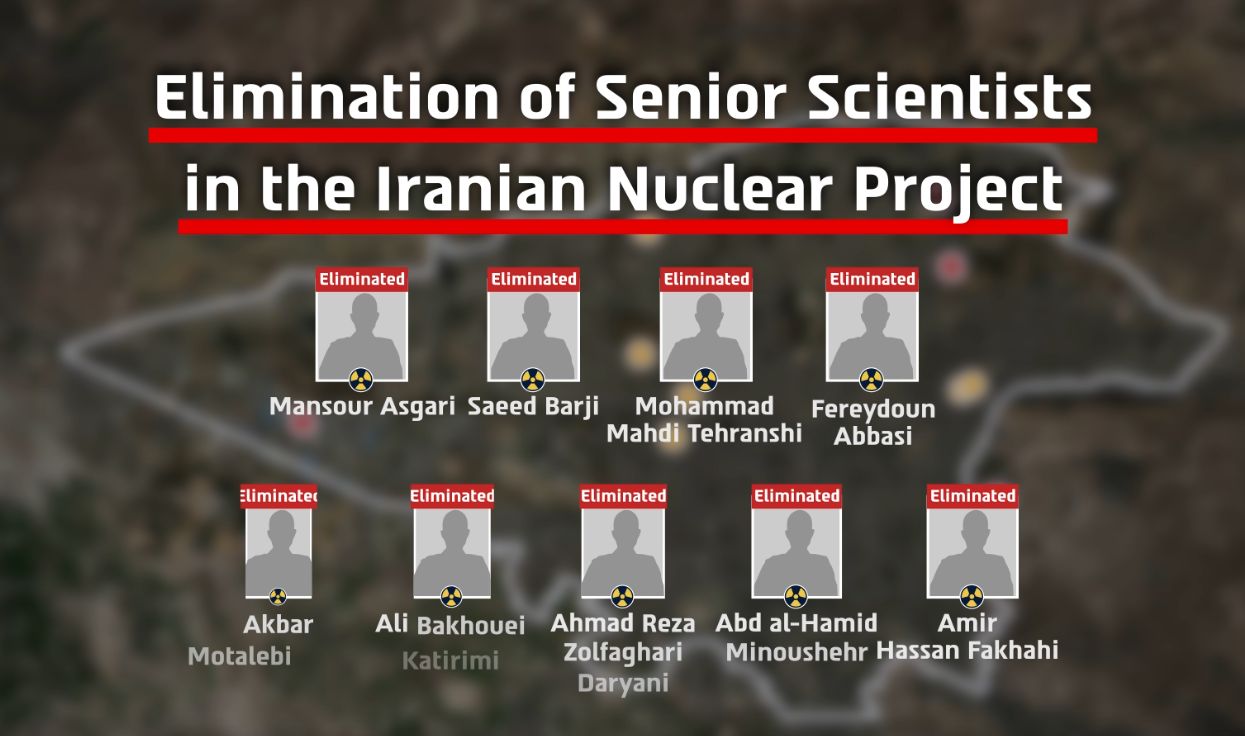Could Israeli attacks on Iran's nuclear facilities trigger dangerous radioactive emissions? This is known.

Israel launched a series of attacks against military and nuclear facilities in Iran early Friday morning, which were repeated throughout the day in the launch of the so-called "Operation Rising Lion." Israel said the strike could last 14 days or as long as necessary to end the threat of a nuclear bomb.

Natanz nuclear facility in southern Tehran, Iran. Photo: AFP
These bombings, which left at least 224 dead, dealt a severe blow to Iran's nuclear program. Experts say the impact, for now, is not entirely definitive.
Here's how the situation between these two Middle Eastern countries is developing.
What is the extent of the damage? Among Israel's targets were Iran's main uranium enrichment plant, Natanz; the second largest plant near the Fordo area, located 100 kilometers south of the capital; and the Isfahan nuclear facility, about 350 kilometers southeast of Tehran.
According to the International Atomic Energy Agency (IAEA), citing information from Iranian authorities, the exterior of the Natanz plant in the center of the country was "destroyed." The site's electrical infrastructure was also destroyed.
"Nothing indicates," however, that "there was a physical attack on the underground chamber" of the facility, where the main plant is located, the UN nuclear agency stated. But "the power outage could have damaged" its thousands of centrifuges , it added.
The damage, confirmed by satellite imagery, is "significant," the US-based Institute for Science and International Security (ISIS), a body specializing in nuclear proliferation issues, described in a report.
The other enrichment site, Fordo , located south of the Iranian capital, was also attacked, but "no damage was reported," according to the IAEA.

Smoke from an oil refinery rises over Tehran after an Israeli attack. Photo: EFE
Four other buildings were hit at the Isfahan nuclear site in central Iran, including the central chemical laboratory, a uranium conversion plant, the fuel manufacturing plant for the Tehran research reactor, and a construction facility.
It is within the grounds of this complex that the significant reserves of highly enriched uranium are supposedly located.
Can the nuclear program be destroyed? "Israel can damage Iran's nuclear program, but it is unlikely to be able to destroy it ," Ali Vaez, a researcher at the International Crisis Group, a US think tank, told AFP .
The reason, he explains, is that Israel does not have the powerful bombs necessary "to destroy the fortified facilities at Natanz and Ford," buried deep underground.
To do so, he would need "US military assistance," confirms Kelsey Davenport, an expert with the Arms Control Association.
According to Manuel Camilo González, a professor of international relations at the Javeriana and San Buenaventura universities, "Operation Rising Lion" not only targeted infrastructure, "but also personnel such as scientists and commanding officers of these programs. A new strategy that also seeks to eliminate potential agents who could launch this program, as well as weaken the Iranian regime's decision-making to prevent attacks on Israel," he explains to this newspaper.
However, according to Davenport, the knowledge acquired by Tehran cannot be destroyed, even though nine scientists were killed in the attacks, he adds.

Israeli scientists killed by Israel. Photo: Israel Defense Forces Spokesperson
The question arises as to what happened to the enriched uranium stockpiles. For now, it's impossible to know. "If Iran manages to transfer some of them to secret facilities, Israel will have lost the game," Vaez emphasizes.
What risks exist for the population? The UN nuclear agency did not report an increase in radiation levels around the various affected plants.
IAEA Director General Rafael Grossi stated that, for example, the Natanz plant "has remained unchanged and within normal levels, indicating that there has been no external radiological impact on the population or the environment."
"There is very little risk that attacks on uranium enrichment facilities will result in dangerous radioactive releases," Davenport said.
But an attack on the Bushehr nuclear power plant in the south of the country could have "serious consequences for health and the environment," he added.
Nuclear sites "must never be attacked, regardless of the context or circumstances, as it could harm the population and the environment," IAEA Director General Rafael Grossi insisted on Friday.
Is Iran really close to obtaining the atomic bomb? While the 191 countries that signed the Treaty on the Non-Proliferation of Nuclear Weapons (NPT) are committed to enriching uranium to a limit of 3.67%, Iran stockpiles around 400 kilos of this chemical element at a purity level of 60%, which puts it very close to what is needed to make atomic bombs (90%).

Satellite image shows fires at the Shiraz missile facility in southern Iran. Photo: AFP
As things stand, Iran is "not far" from possessing a nuclear bomb, Grossi warned in April. "It's like a puzzle. They have the pieces and one day they'll be able to put them together," he added in an interview with Le Monde.
By mid-May, the country had 408.6 kg of 60% enriched uranium, close to the 90% required to design an atomic bomb.
According to an ISIS report, Iran's so-called "breakout time" —the time required to manufacture a nuclear weapon—has been reduced to zero.
However, the IAEA says it has "no credible indications of a structured nuclear program" by Iran aimed at acquiring nuclear weapons, as may have occurred in the past. Tehran denies having such ambitions.
"So far, the costs associated with militarization have outweighed the benefits. But that calculation could change in the coming weeks," Kelsey Davenport told AFP .

IAEA Director Rafael Grossi. Photo: EFE
"The Israeli attacks pushed Iran back technically, but politically they brought it closer to nuclear weapons," he added.
Especially since there is now "a real risk of enriched uranium being diverted," an operation that "could go undetected for weeks," as current attacks prevent IAEA inspectors from accessing the sites.

Israel attacks Iran, including nuclear facilities Photo:
eltiempo





